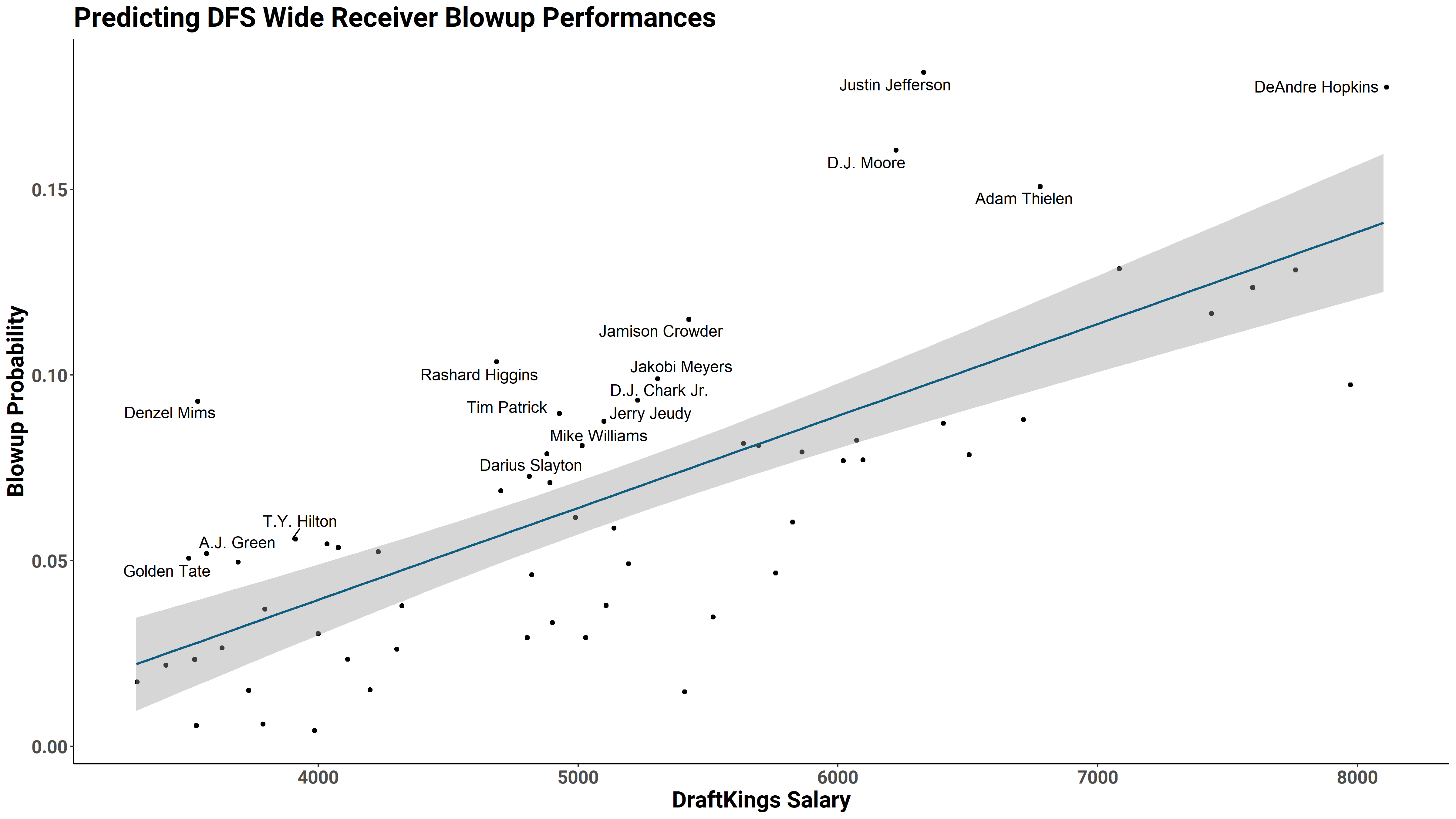In its most boiled-down form, DFS involves identifying the highest-scoring players at each position in a given week. With close to 20 playable options at the quarterback and tight end positions, along with even more at the running back and wide receiver positions, it is a feat in itself to identify one position correctly.
To finish at the top of a DFS contest, you must hit on basically all skill positions and circumvent the randomness associated with selecting defenses. Doing all of this while also fitting under the confines of a salary cap makes DFS one of the most difficult setups to beat consistently, especially in large-field tournaments.
Being first and foremost a data company, PFF has the ability to build and train models not only on public data but also PFF specific data, such as receiving grades and pass routes run, among a litany of other variables. Utilizing specific variables, we can build a model tuned to predict performances where a pass-catcher goes over a certain site-specific scoring threshold. This threshold is defined at 25 DraftKings, 20 FanDuel or 20 Yahoo receiving fantasy points.
This model provides the percentage chance that each receiver will meet or exceed our fantasy-point threshold for the site given their historical opportunity. The model won’t be right on every player, but it is useful in identifying the performances that we want to unearth in our DFS lineups.
Week 11 was dominated by the top talent at wide receiver, with Keenan Allen, Adam Thielen, Robert Woods and Tyreek Hill among the top scorers at the position. Our blowup model liked the opportunity for Thielen, Damiere Byrd and Davante Adams to outperform their salary expectations, and they did by finishing in the top 10 for fantasy scoring. Our model identified the wrong Carolina wide receiver, as Curtis Samuel and D.J. Moore finished with top-10 performances instead of Robby Anderson.
Travis Fulgham was a complete miss, and he now has duplicate weeks scoring 1.8 fantasy points despite seeing seven targets last week. Jakeem Grant was the only other write-up that didn’t at least pay off his salary expectation, but this was again not due to his target volume.
Justin Jefferson, Amari Cooper, Mike Williams and Rashard Higgins all had respectable games that paid off their salaries but didn’t provide the ceiling-breaking performances needed to win a GPP contest. Hunter Henry found the endzone for the second straight week, which is all you need from the tight end position at this point. Jordan Akins saw a high rate of targets and turned into the best low-priced tight end option on the slate.
Week 11 saw the majority of games go under their total for the second straight week. We have a number of higher total games this week, but the distribution of some games on the low side once again brings our mean down. This is different from last week — the range of totals is much more condensed.
Expect heavy ownership on the Chiefs and Buccaneers game, with the Raiders and Falcons being the next most popular contest. Ownership should be low outside of these situations, with our blowup model finding numerous options from these lower total games. Let’s dive into my favorite pass-catching options for Week 12 based on our blowup model.

DEANDRE HOPKINS ($8,100)
The top-priced wide receiver set for under 10% ownership is always noteworthy when they are popping up on the blowup model. Hopkins is coming off a relatively quiet Thursday night performance, where most DFS players thought he would explode against our 28th-ranked Seahawks defense. This was only the second game where Hopkins saw a target on under 20% of his routes, with the pace not conducive to a shootout as most expected.
Exclusive content for premium subscribers

WANT TO KEEP READING?
Dominate Fantasy Football & Betting with AI-Powered Data & Tools Trusted By All 32 Teams
Already have a subscription? Log in



 © 2025 PFF - all rights reserved.
© 2025 PFF - all rights reserved.